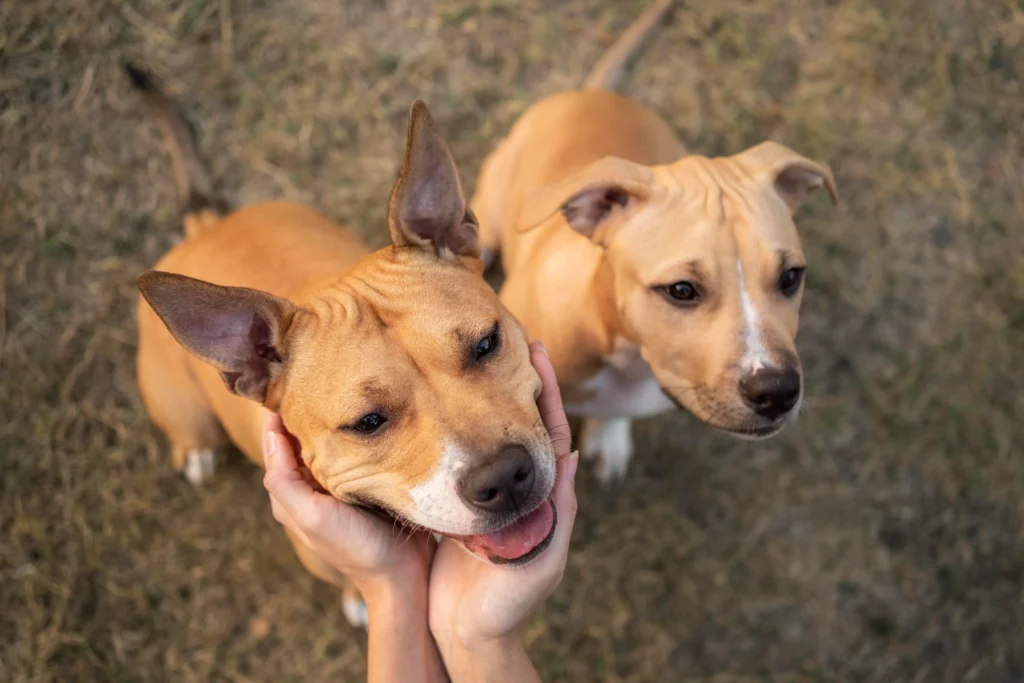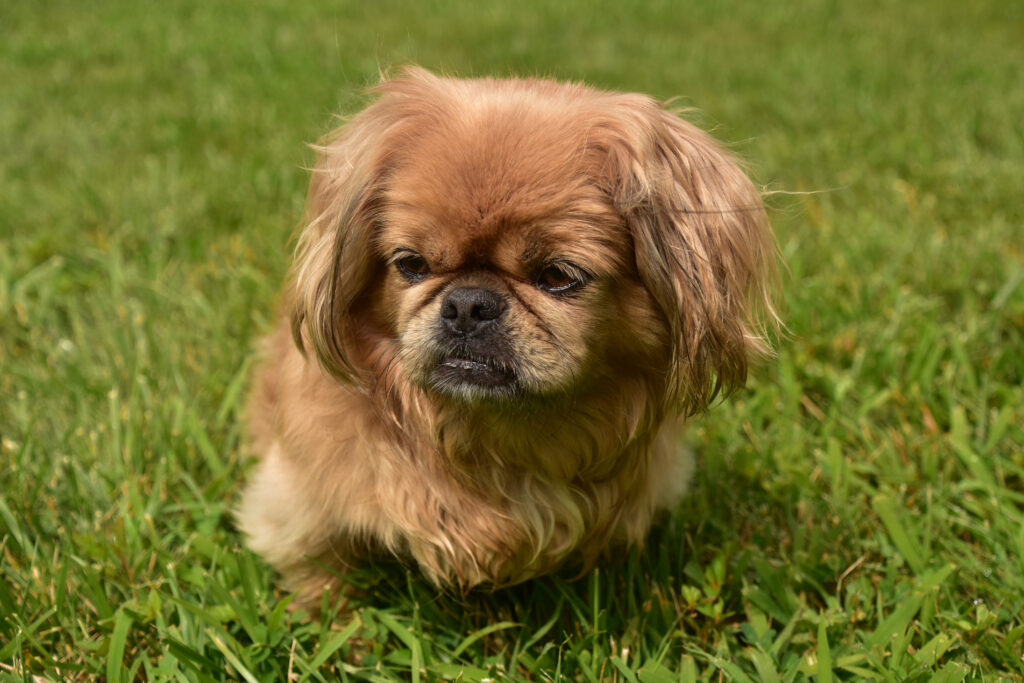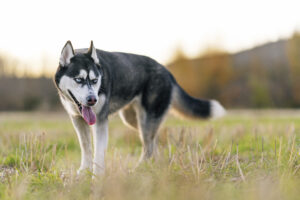Introduction
Have you ever felt like your canine companion is practically attached to you with velcro? If your furry friend follows you from room to room, can’t bear to let you out of their sight for even a moment, and seems to consider personal space a foreign concept, you might be the proud owner of a “velcro dog.” These devoted canines take attachment to a whole new level, forming bonds so intense that alone time becomes a genuine challenge.
Velcro dog breeds are known for their exceptional loyalty and affection, but this endearing quality comes with a significant responsibility. These dogs don’t just prefer your company—they genuinely struggle without it. Understanding which breeds fall into this category is essential for prospective pet parents and current dog owners alike.
In this comprehensive guide, we’ll explore seven of the most clingy dog breeds that truly can’t bear to be left alone. We’ll dive into their unique characteristics, care requirements, and how to help manage their attachment needs. Whether you’re considering adopting one of these affectionate companions or seeking to better understand your current pet’s behavior, this article will provide valuable insights into the world of velcro dog breeds.

What Makes a Dog a “Velcro Dog”?
Before we dive into specific breeds, it’s important to understand what exactly defines a velcro dog. The term “velcro dog” refers to canines that display exceptionally strong attachment behaviors toward their owners. These dogs are not simply affectionate—they demonstrate a level of dependency that goes beyond typical canine companionship.
Common Characteristics of Velcro Dog Breeds
Velcro dog breeds typically exhibit several distinctive behaviors:
- Shadow behavior: They follow their owners everywhere, including to the bathroom
- Physical contact: They constantly seek to be touching their human companions
- Distress when separated: They show significant anxiety when left alone
- Intense greeting rituals: They act as if you’ve been gone for years, even if it’s just been minutes
- Constant attention-seeking: They persistently request pets and interaction
- Vigilant monitoring: They keep a watchful eye on their owners’ movements at all times
While many dogs show some of these traits, velcro dog breeds display them consistently and intensely. This behavior often stems from breeding for companionship purposes, where dogs were specifically developed to form close bonds with humans.
The Difference Between Attachment and Separation Anxiety
It’s important to distinguish between healthy attachment and problematic separation anxiety. While velcro dog breeds naturally form strong bonds, true separation anxiety is a behavioral disorder that requires intervention.
Signs that a dog’s attachment has progressed to separation anxiety include:
- Destructive behavior when left alone
- Excessive vocalization (barking, howling, whining)
- Inappropriate elimination (even in house-trained dogs)
- Self-destructive behaviors like excessive licking or chewing
- Escape attempts that may result in injury
Many velcro dog breeds are predisposed to separation anxiety due to their naturally strong attachment tendencies, but with proper training and management, these issues can be addressed effectively.
7 Classic Velcro Dog Breeds That Struggle with Alone Time
1. Vizsla: The Ultimate Velcro Dog
The Hungarian Vizsla tops most lists of velcro dog breeds, and for good reason. These elegant, rust-colored hunting dogs were bred to work closely with their handlers and have earned the nickname “velcro vizslas” due to their exceptional clinginess.
Attachment Style: Vizslas are known for their intense need for physical contact. They don’t just want to be in the same room as their owners—they want to be touching them at all times. Many Vizsla owners report their dogs constantly leaning against them or sitting on their feet.
Alone Time Tolerance: Of all velcro dog breeds, Vizslas typically have one of the lowest tolerances for being left alone. Many cannot handle more than a few hours of solitude without showing signs of distress.
Why They’re So Attached: Vizslas were bred to be both hunting partners and family companions, creating a dog that excels at working cooperatively with humans while forming intensely close bonds. Their historical role required them to pay careful attention to their handlers, a trait that manifests today as constant monitoring of their owners.
Special Considerations: Potential Vizsla owners should be prepared for a dog that will rarely leave their side. These dogs thrive in homes where someone is present most of the time and where they receive ample physical exercise and mental stimulation.
2. Bichon Frise: The Pocket-Sized Shadow
Don’t let their fluffy, independent appearance fool you—Bichon Frises are among the most devoted and clingy small velcro dog breeds. These charming little companions were bred specifically to be lapdogs and companions, and they take this job very seriously.
Attachment Style: Bichons typically display their velcro tendencies through constant following behavior and a strong desire for lap time. They’re known for their “velcro paws”—the way they gently put their paws on their owners to maintain physical contact.
Alone Time Tolerance: While slightly more independent than some larger velcro dog breeds, Bichons still struggle with extended periods alone. Many can handle 4-5 hours maximum before becoming distressed.
Why They’re So Attached: These dogs have been companions to humans for centuries, with their primary purpose being to provide affection and companionship. Unlike working breeds that were also expected to perform independent tasks, Bichons were bred solely for human interaction.
Special Considerations: Bichons make excellent apartment dogs and companions for seniors due to their smaller size and moderate exercise needs. However, potential owners should be prepared for a dog that expects significant attention and interaction throughout the day.

3. German Shepherd: The Protective Shadow
While German Shepherds are known for their work as police and military dogs, they’re also among the most loyal dog breeds with strong attachment tendencies. These intelligent working dogs form intense bonds with their families and can struggle significantly when left alone.
Attachment Style: German Shepherds typically express their attachment through vigilant monitoring and protective behaviors. They may not constantly demand physical affection like some velcro dog breeds, but they will keep careful track of their owners’ whereabouts at all times.
Alone Time Tolerance: Despite their independent working ability, German Shepherds can develop significant separation issues when left alone regularly. Their high intelligence means they need mental engagement, and their strong pack drive makes isolation particularly difficult.
Why They’re So Attached: German Shepherds were developed to work closely with shepherds and later as military and police partners. This breeding has created dogs with an exceptional capacity for human cooperation and bonding. Their protective instincts also drive them to keep their “pack” members within sight.
Special Considerations: These large velcro dog breeds require substantial exercise and mental stimulation. Owners should be prepared to include their German Shepherd in family activities and provide structured alone-time training to prevent separation anxiety.
4. Cavalier King Charles Spaniel: The Gentle Velcro Companion
Few dogs embody the combination of gentleness and attachment quite like the Cavalier King Charles Spaniel. These sweet-natured dogs were bred specifically to be companions to royalty, and they continue to excel at this role today as one of the most affectionate dog breeds.
Attachment Style: Cavaliers show their attachment through gentle persistence. They’ll quietly follow their owners from room to room and are known for their soulful, attentive gaze that rarely leaves their human companions.
Alone Time Tolerance: These dogs typically struggle with extended periods alone, with many showing signs of distress after just 3-4 hours of separation. Their breeding as companion animals means they genuinely need human interaction to thrive.
Why They’re So Attached: Cavaliers were developed solely to be companions, with no working purpose beyond providing affection and receiving it in return. This focused breeding has created dogs that are fundamentally dependent on human interaction for their emotional wellbeing.
Special Considerations: Cavaliers make excellent therapy dogs precisely because of their attentive, gentle nature and desire to be close to people. They’re ideal for owners who want a dog that bonds closely with owners and who can include their pet in most aspects of daily life.
5. Border Collie: The Watchful Herder
While Border Collies are often celebrated for their intelligence and working ability, they’re also among the dog breeds that get attached intensely to their owners. These highly sensitive dogs form deep bonds with their families and can struggle significantly with separation.
Attachment Style: Border Collies typically express their attachment through constant monitoring and anticipation of their owners’ needs. They’re known for their intense eye contact and ability to predict their handlers’ movements.
Alone Time Tolerance: Despite their working background, Border Collies can develop significant anxiety when regularly left alone. Their high intelligence and strong herding instincts mean they need engagement and purpose, making isolation particularly challenging.
Why They’re So Attached: These dogs were bred to work in constant communication with shepherds, developing an exceptional sensitivity to human cues and needs. This trait translates to a deep dependence on human interaction and guidance in the home environment.
Special Considerations: Border Collies require substantial mental and physical exercise. Owners must be prepared to provide consistent training, enrichment, and gradual alone-time conditioning to help these velcro dog breeds manage separation.
6. Italian Greyhound: The Delicate Velcro Dog
Among small velcro dog breeds, the Italian Greyhound stands out for its combination of sensitivity and attachment. These elegant miniature sighthounds may look independent, but they form intense bonds with their owners and are notorious for their inability to handle solitude.
Attachment Style: Italian Greyhounds show their attachment through seeking warmth and physical contact. They’re known for burrowing under blankets with their owners and becoming genuinely distressed when unable to maintain physical proximity.
Alone Time Tolerance: These sensitive dogs often struggle significantly with being left alone, with many unable to cope with more than 2-3 hours of separation without showing signs of anxiety.
Why They’re So Attached: Unlike many sighthounds, Italian Greyhounds were bred primarily as companions rather than hunters. For centuries, they’ve been lap dogs to nobility, creating a breed that’s fundamentally dependent on human companionship.
Special Considerations: Italian Greyhounds tend to bond most strongly with one person, making them excellent companions for individuals living alone. However, their sensitivity makes them challenging for busy households with unpredictable schedules.
7. Australian Shepherd: The Devoted Working Companion
Australian Shepherds round out our list of velcro dog breeds that struggle with alone time. These intelligent, energetic working dogs form powerful bonds with their families and can develop significant attachment issues if not properly trained and managed.
Attachment Style: Aussies typically express their attachment through constant vigilance and involvement in all family activities. They want to not just be near their people but to be actively engaged with them.
Alone Time Tolerance: Despite their working background, Australian Shepherds can develop separation anxiety when regularly left alone. Their high intelligence and strong herding drive mean they need consistent engagement.
Why They’re So Attached: These dogs were developed to work closely with ranchers, requiring both independence and the ability to work cooperatively with humans. This combination creates dogs that are capable but also deeply connected to their human “flock.”
Special Considerations: Australian Shepherds thrive in active households where they can participate in family activities. They require substantial physical exercise, mental stimulation, and gradual alone-time training to manage their attachment tendencies.
Living with a Velcro Dog: Challenges and Rewards
The Joys of Velcro Dog Breeds
Living with dog breeds that follow you everywhere comes with numerous rewards:
- Unconditional love: Few things compare to the devotion of a velcro dog
- Consistent companionship: These dogs are always there when you need emotional support
- Intuitive response: Many velcro dog breeds become highly attuned to their owners’ emotions
- Protection: Their constant vigilance often translates to natural protective behaviors
- Deep bond: The connection formed with these dogs is often extraordinarily profound
For many owners of velcro dog breeds, the intense attachment these dogs demonstrate is precisely what makes them such special companions. These are truly dogs that bond closely with owners, creating relationships that can be deeply fulfilling.
The Challenges of Highly Attached Dogs
However, owning one of the most clingy dog breeds also presents unique challenges:
- Limited privacy: Basic activities like showering or using the bathroom rarely happen without canine supervision
- Difficulty completing tasks: Simple chores can become complicated with a dog perpetually underfoot
- Planning requirements: Every absence must be carefully planned to manage the dog’s anxiety
- Potential for behavioral issues: Without proper management, attachment can progress to problematic anxiety
- Guilt: Many owners of needy dog breeds experience guilt when they need to leave their pets alone
These challenges shouldn’t discourage potential owners, but they do require preparation and understanding. Living successfully with velcro dog breeds means accepting their attachment needs while also establishing healthy boundaries.
Managing Separation Issues in Velcro Dog Breeds
For dogs that hate being alone, separation can be genuinely distressing. However, with patience and consistency, most velcro dog breeds can learn to tolerate necessary alone time.
Gradual Desensitization Training
One of the most effective approaches for dogs with separation anxiety or strong attachment is gradual desensitization:
- Start with seconds: Leave for just 5-10 seconds, then return before anxiety develops
- Ignore greetings: Keep departures and returns low-key to avoid reinforcing anxiety
- Establish a routine: Use consistent cues like picking up keys without leaving to reduce their significance
- Gradually increase duration: Slowly extend separation periods as your dog shows comfort
- Create positive associations: Offer special treats or toys only available during alone time
This process can take weeks or even months for true velcro dog breeds, but patience yields lasting results.
Environmental Management for Velcro Dogs
Creating an environment that supports your dependent dog breed during necessary alone time is crucial:
- Safe space: Designate a comfortable area where your dog feels secure
- Background noise: Leave on the television or radio to reduce the sense of isolation
- Comforting scents: Leave an unwashed t-shirt or blanket with your scent
- Engaging toys: Provide puzzle toys or long-lasting chews to create positive distraction
- Physical exercise: Ensure your dog receives adequate exercise before being left alone
These environmental supports can significantly reduce anxiety in velcro dog breeds when separation is unavoidable.
When to Seek Professional Help
For some dogs that get attached intensely, standard management techniques may not be sufficient. Signs that professional intervention is needed include:
- Self-injury during separation attempts
- Destructive behavior that doesn’t improve with training
- Excessive vocalization that continues despite management
- Physical symptoms like drooling or panting when separation cues appear
- Complete inability to eat or engage with enrichment when alone
In these cases, consult with a veterinary behaviorist who can develop a comprehensive plan that may include behavior modification, environmental management, and sometimes appropriate medication to help your velcro dog cope with necessary separations.
Choosing the Right Velcro Dog for Your Lifestyle
If you’re considering adding one of these affectionate dog breeds to your family, careful matching of breed characteristics to your lifestyle is essential.
Ideal Owners for Velcro Dog Breeds
Velcro dog breeds tend to thrive with:
- Remote workers or stay-at-home individuals: People who spend significant time at home
- Active families: Households where someone is usually present
- Retirees: Those with flexible schedules and desire for companionship
- Therapy/service dog handlers: People who can include their dogs in most daily activities
- Multi-pet households: Homes where other pets can provide companionship during brief absences
These living situations minimize alone time for breeds that struggle with separation.
Lifestyle Considerations Before Adopting
Before bringing home a velcro dog, honestly assess:
- Your work schedule and typical daily absences
- Your willingness to arrange pet care during necessary absences
- Your tolerance for constant canine companionship
- Your ability to provide adequate exercise and mental stimulation
- Your experience level with managing dependent behaviors
Remember that while velcro dogs can adapt to reasonable periods alone with proper training, they will never be truly independent. These loyal dog breeds require owners committed to meeting their substantial emotional needs.
Alternative Options for Busy Dog Lovers
If your heart is set on a canine companion but your lifestyle wouldn’t suit a velcro dog, consider:
- More independent breeds: Some breeds naturally handle alone time better
- Adopting adult dogs: Older dogs often have established independence skills
- Part-time fostering: Providing temporary homes for shelter dogs when your schedule permits
- Pet-sitting or dog-walking: Helping care for others’ pets when you can’t commit full-time
- Volunteering at shelters: Getting your “dog fix” while benefiting animals in need
These alternatives allow you to enjoy canine companionship without the commitment that most clingy dog breeds require.
Conclusion: Is a Velcro Dog Right for You?
Velcro dog breeds offer unparalleled loyalty, affection, and companionship. These dogs that love attention provide a level of devotion that many owners find deeply fulfilling. From the shadow-like Vizsla to the gentle Cavalier King Charles Spaniel, these breeds create bonds that truly enrich the lives of suitable owners.
However, living with lap dog breeds and cuddly dog breeds that display intense attachment requires commitment and understanding. Potential owners must be prepared for the responsibility of caring for a dog that genuinely struggles without human companionship.
If you’re considering adding one of these emotional support dog breeds to your family, honestly assess your lifestyle, expectations, and ability to meet the dog’s needs. With the right match and proper training, the relationship with a velcro dog can be one of life’s most rewarding experiences.
Remember that while breed tendencies provide useful guidelines, individual dogs vary significantly. Some dogs from typically independent breeds may show strong attachment behaviors, while occasionally individuals from velcro dog breeds may demonstrate unexpected independence.
Whatever breed you choose, commitment to training, socialization, and meeting your dog’s physical and emotional needs will lay the foundation for a healthy, balanced relationship—whether your dog is attached to you with velcro or not.
FAQs About Velcro Dog Breeds
Are velcro dog breeds more prone to separation anxiety?
Yes, velcro dog breeds often have a higher predisposition to separation anxiety than more independent breeds. Their natural attachment tendencies can more easily develop into problematic behaviors when not properly managed. However, with consistent training and gradual acclimation to alone time, most velcro dogs can learn to tolerate necessary separations without developing full-blown anxiety disorders.
Can you train a velcro dog to be more independent?
While you can improve a velcro dog’s ability to handle separation through systematic training, you cannot fundamentally change their attachment-oriented nature. Breeds that have been specifically developed for close human companionship will always maintain that strong bond. Training focuses on helping them cope with necessary absences rather than changing their basic temperament.
Are small dogs more likely to be velcro dogs than large breeds?
While many small breeds were specifically developed as companion animals and do show strong attachment behaviors, velcro tendencies appear across all size categories. Some of the most attached velcro dog breeds are actually large dogs like Vizslas and German Shepherds. The tendency toward attachment relates more to breeding purpose than size.
Do velcro dog breeds make good emotional support animals?
Many velcro dog breeds excel as emotional support animals precisely because of their attentive, affectionate nature and desire to be close to their humans. Their natural sensitivity to their owners’ emotions makes them particularly well-suited for providing comfort and support. However, potential handlers should ensure they can meet these dogs’ significant need for companionship in return.
Will getting a second dog help with my velcro dog’s separation anxiety?
While having canine companionship can help some velcro dogs cope better with human absence, it’s not a guaranteed solution. Many velcro dog breeds bond specifically with their human family rather than seeking general companionship. A second dog may help in mild cases but usually doesn’t resolve significant attachment issues. Proper training remains essential regardless of household composition.
This article about velcro dog breeds was written by pet behavior experts at PetsPump. For more information about managing separation anxiety, check out our comprehensive guide to canine behavior or learn about creating a pet-friendly home environment.
External resources:






